What Does Breadfruit Taste Like? It’s Nature’s Chameleon Treat!
Breadfruit, a fascinating tropical ingredient, sparks curiosity among food enthusiasts worldwide.
Culinary adventurers often wonder about its unique flavor profile and potential uses in meals.
This starchy fruit grows abundantly in warm regions, attracting attention from chefs and home cooks alike.
Its versatility suggests multiple preparation methods that transform its character dramatically.
Nutrition experts praise breadfruit for its impressive health benefits and sustainable agricultural potential.
Cultural traditions across Pacific islands and Caribbean nations have long embraced this remarkable produce.
Understanding its taste requires more than casual observation – it demands a nuanced exploration of cooking techniques and cultural contexts.
Uncover the delicious secrets of this intriguing fruit and expand your culinary knowledge.
What Is Breadfruit?
Breadfruit sits among tropical fruits with rough, bumpy skin colored in shades of yellow and green.
Sizes match big footballs, often weighing around 12 pounds and spreading to 12 inches wide.
People in Caribbean, Latin American, and Polynesian regions count on this special fruit as a key food source.
Communities value breadfruit for its many cooking uses and health benefits.
Breadfruit trees produce massive amounts of fruit with minimal care from farmers.
One single tree can provide enough food to feed four people easily.
Such trees grow well in warm regions where hunger strikes hardest, and wood from these trees works for building too.
Shoppers might struggle finding breadfruit across United States locations, but stores near Caribbean neighborhoods will likely stock this hearty produce.
Taste of Breadfruit
Unripe breadfruit comes with a thick, green stringy inside that works well in meals as a veggie.
Cooks should heat it up, much like a plantain, to lower its starchy feel.
After boiling, it has a meat-like feel and a light taste similar to an artichoke heart.
When fully ripe, breadfruit shifts to a creamy yellow shade and becomes soft and paste-like.
Its smell turns pleasant and sweet, but the inside hasn't changed all its starch to sugar, so it won't taste sugary.
People usually don't want to eat it at this point.
Cooked ripe breadfruit feels and tastes like a potato, with a smell often compared to fresh bread.
Overripe breadfruit can be eaten raw since its starch has turned to sugar.
Fruit becomes custard-like with a bread-style flavor and tastes much sweeter than other fruits.
Its texture turns very soft, sticky, and mushy.
Fallen fruit will have skin so soft it breaks open easily.
Some breadfruit types have many seeds, while others have none.
Cooked seeds make a healthy, tasty snack with a nice crunch.
Breadfruit Ripeness Stages and Their Impact on Taste
Breadfruit changes a lot as it ripens, and its taste and texture shift with each stage:
Choosing breadfruit at different ripeness levels changes your meal’s flavor and texture, so pick what fits your recipe best.
Breadfruit Features
Breadfruit stands out for its unique features.
See why this tropical fruit is catching the attention of food lovers.
Many Types Are Available
There are many kinds of breadfruit, and each type brings its own look and flavor to the table:
Trying different types lets you find the flavor and texture you like best for your cooking.
Breadfruit Trees Grow Lots Of Fruit
Breadfruit trees reach impressive heights near 80 feet. These trees ask for minimal care, making them simple to maintain.
Single trees can generate massive fruit yields - around 450 pounds annually - and continue producing for many decades.
May Help With Food Shortages
Single breadfruit trees can yield massive amounts of fruit, which might help solve hunger problems in regions with limited food supplies.
These trees thrive in warm tropical and subtropical zones where nutritional challenges exist.
Breadfruit vs. Jackfruit
Jackfruit stands much bigger and smells strong, while breadfruit comes smaller with no smell at all.
Breadfruit looks simple and plain, but jackfruit has bumpy curves covering its surface.
Breadfruit looks creamy and starchy like a potato would. Jackfruit, however, contains multiple yellow pieces you can eat.
Stores sell jackfruit when it's young and green. People like using it as a meat swap in saucy dishes since it tastes mild.
Breadfruit carries a flavor exactly like its name suggests - just like bread.
How to Eat Breadfruit
Breadfruit is a flexible food that can be enjoyed in many ways, as long as it’s prepared with care:
Safety Tips for Eating Breadfruit
Pregnant women and breastfeeding mothers should steer clear of breadfruit since its safety remains uncertain.
Medical experts recommend avoiding this fruit during these sensitive periods.
People with bleeding problems need to be cautious about consuming breadfruit.
Research suggests this fruit might increase bleeding risks for those with existing blood disorders.
Individuals with allergies to bananas or Benjamin figs could experience allergic reactions when consuming breadfruit.
Potential symptoms might include skin irritation or more serious health complications.
Blood pressure patients should monitor their intake of breadfruit carefully.
While this fruit could help reduce blood pressure, consuming it might cause dangerous drops for people who already have low blood pressure levels.
Where and How Breadfruit Grows
Breadfruit trees grow naturally in regions like New Guinea, Maluku Islands, and Philippines before spreading across Southeast Asia and Pacific Islands. These trees belong to mulberry and fig plant groups called Moraceae.
People recognize this tree because of its unique fruit flavor and texture. Trees start producing fruit after three to five years of growing.
Large leafy branches spread wide, with trees reaching heights near 85 feet (26 meters).
Trees produce white sticky liquid called latex from roots, leaves, and fruit.
People use this liquid for many purposes such as:
Fruit contains lots of healthy nutrients like carbohydrates, fiber, calcium, potassium, magnesium, riboflavin, thiamin, niacin, and small amounts of iron.
One tree can make between 25 and 200 fruits during harvest season.
Farmers usually grow new trees using root pieces or plant shoots instead of seeds.
Ways to Cook With Breadfruit
Breadfruits work well in many cooking methods like frying, boiling, or steaming. People use them in different meals such as:

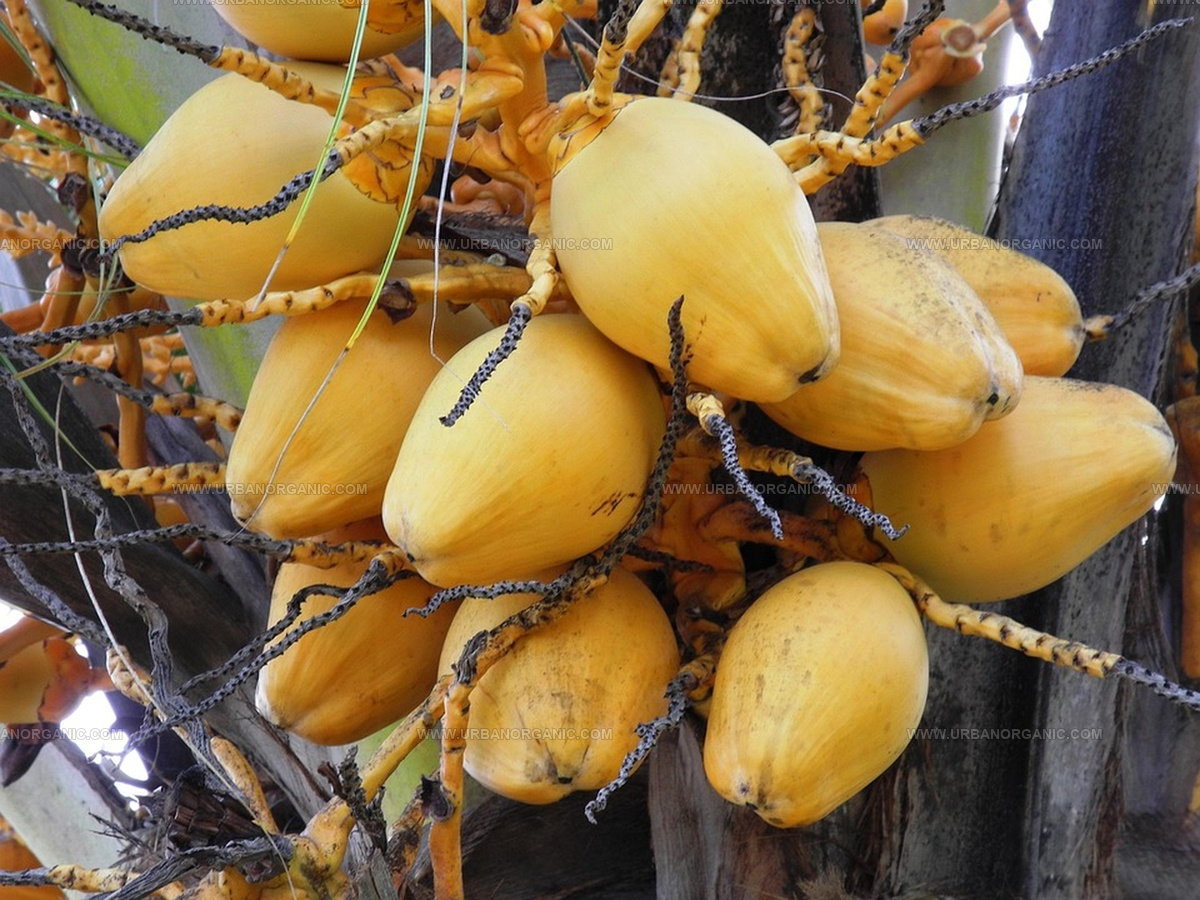
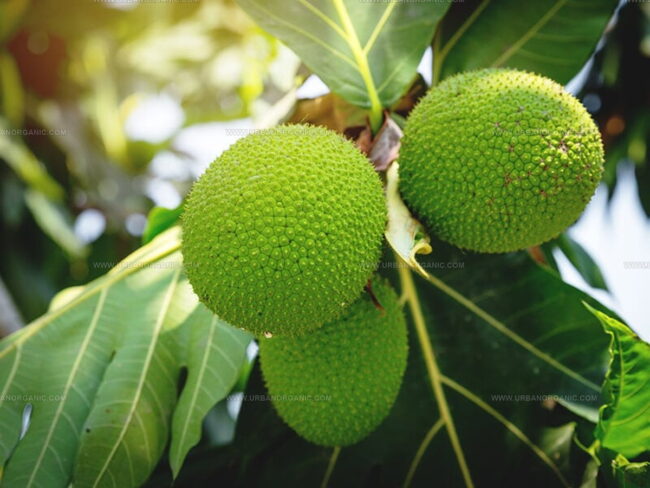
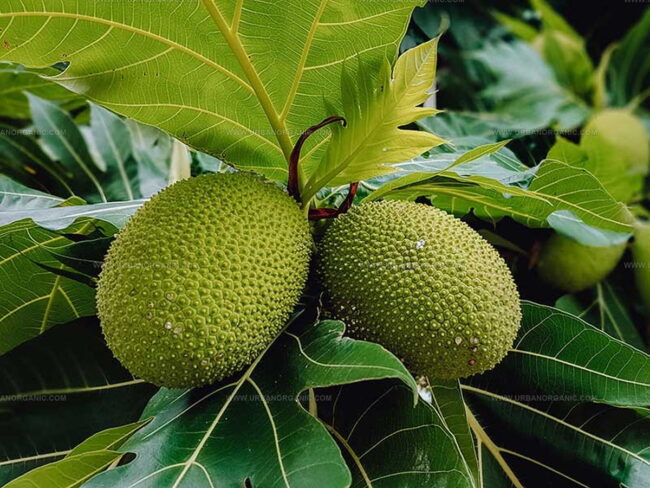
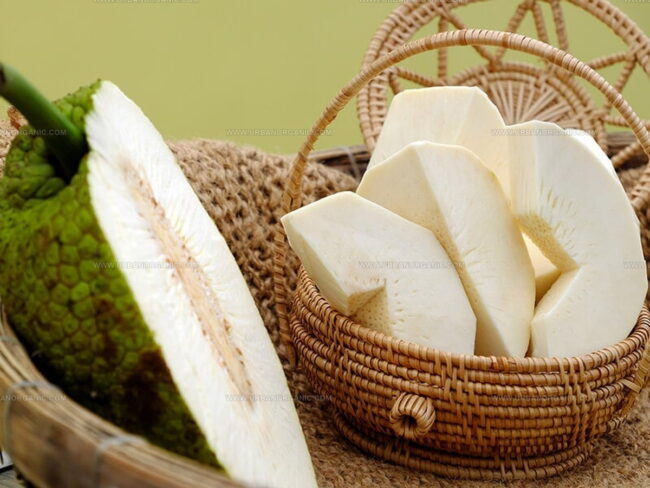
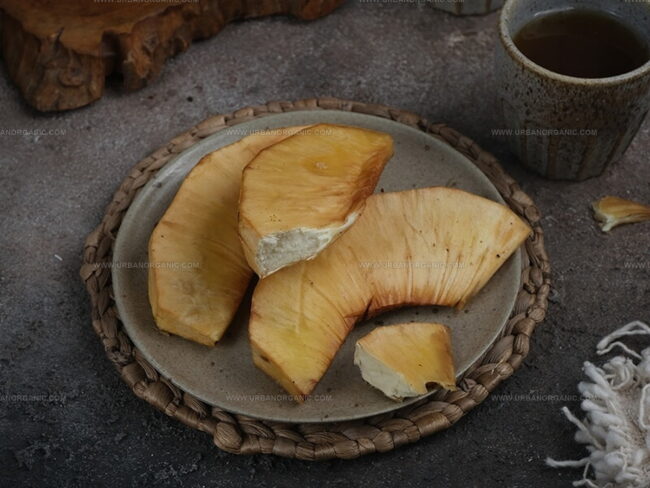
Michael Thompson
Founder & Culinary Director
Expertise
Classical & Contemporary Cooking Techniques, Global Cuisine Appreciation, Nutrition & Menu Engineering, Sustainable Cooking Practices, Farm-to-Table Cuisine
Education
Southwestern Oregon Community College
Michael grew up in Oregon, where he learned early that food tastes better when it’s fresh, local, and made with care.
After earning his degree from the Southwestern Oregon Community College, he focused his career on teaching others how to cook with the seasons, reduce food waste, and reconnect with what’s on their plate.
Michael keeps his cooking simple, sustainable, and full of flavor. His favorite part of the process? Watching people realize how easy and satisfying it can be to cook a single great meal from scratch.